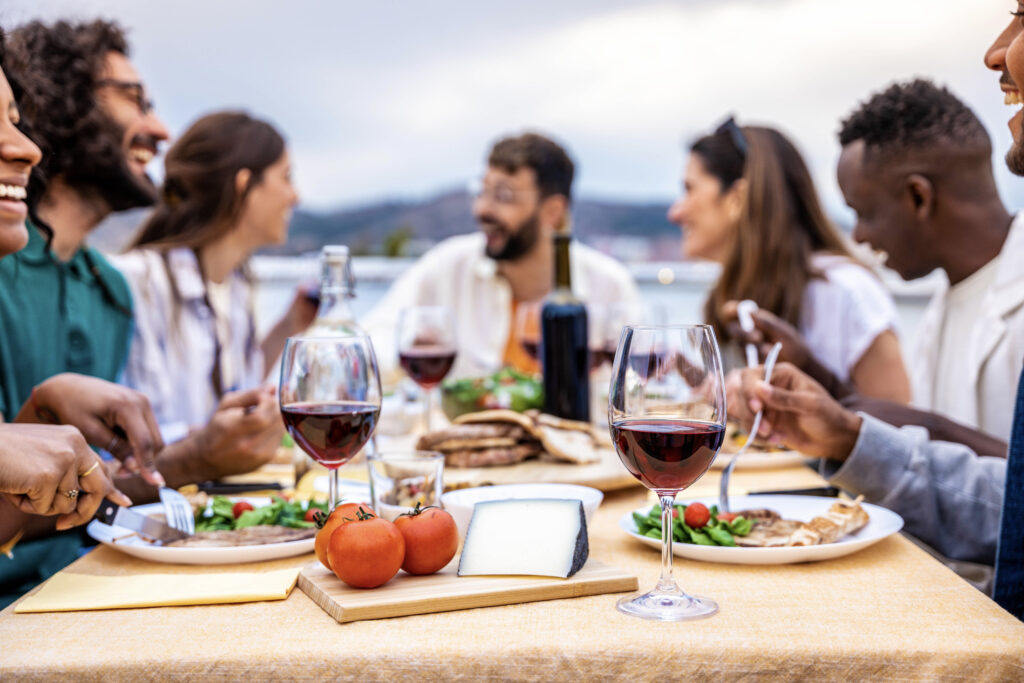Multisensory, memorable meals are satisfying the increased appetite for experiential dining and culinary tourism
By Joy Pouros, Culinary Software Services

The “experience economy” refers to consumers prioritizing experiences over material possessions. For some, this preference aligns with their minimalist lifestyle, while others may be spurred on by social media and “FOMO” (fear of missing out). Regardless of motivation, consumers are increasingly craving dining experiences that go beyond simply eating and enjoying a meal.
Platforms like TikTok and Instagram help fuel the experience economy. Social media enthusiasts want followers to know they did something interesting, and their posts sway friends and family to seek out the same experiences. Influencers post about hidden gems and new foods that their viewers then want to try. In both cases, foodservice businesses will be rewarded for offering a multisensory experience that immerses patrons and creates photo-worthy moments.
Multisensory Experiences: Something for Everyone
Experiential dining is nothing new. Medieval Times opened in the United States in the 1980s, creating a unique experience that transported diners to an age of heroic knights and daring sword fights. Before that, microbreweries offered a new experience, allowing patrons to see beer brewing and interact with the brewmasters as they dined on artisanal fare in the 1970s.
On the surface, Medieval Times and microbreweries have little in common and attract a very different audience. Yet they’re both multisensory and memorable.
Experiential dining revolves around novelty. The experience must be different from a typical meal out, and much of the novelty is multisensory. Since a multisensory, novel experience can be almost anything, it’s helpful to think about it in a few categories:
- Entertainment Integration
The classic “dinner and a show” concept originated in America in the 1950s and 1960s with dinner theaters. Diners are treated to a fun show in addition to their meal, sometimes with the actors also serving the food. It doesn’t have to be a full show on a traditional stage; some restaurants feature the wait staff singing on tables.
Murder mystery dinners take it a step further, with the audience participating in finding a culprit or voting on the ending.
- Participation, Engagement and Education
Dining experiences can be combined with engaging elements like participation or education. Tableside service is one example, where the food is cooked in front of the diners. Other experiences take it further, accompanying dinner with a cooking class, so customers prepare all or part of the meal they then partake in.
Wine and food pairing experiences represent another example of experimental dining that includes education and engagement. Consumers learn more about the qualities of wine and how food and wine are paired together while they sip and eat.

- Theme and Ambiance
Themed restaurants can range from the accessible and family-friendly Rainforest Cafes and Hard Rock Cafes to high-end, daring experiences like Dinner in the Sky, where diners are held 150 feet in the air by a crane throughout their meal.
The key here is to commit to the theme, going beyond decor so the motif permeates the restaurant or dining experience. It cannot feel coincidental or accidental.
- Innovation
Dining becomes an experience when it features innovative culinary techniques, such as food deconstruction or molecular gastronomy.
Innovation doesn’t have to be restricted to cooking methods. Some restaurants have robots serve the food or feature augmented reality technology with interactive tabletops, adding a futuristic flair to traditional dining.
- Cultural/Historical Immersion
Authenticity is trendy, and dining is no exception. Consumers don’t get a turkey leg at a Renaissance Faire because it’s easy to eat—they want the renaissance experience. While fusion dishes absolutely have their place, there’s something about knowing that what you are eating is “the real deal”—handmade pasta made the same way your Italian great-great grandmother used to make it, for example.
Culinary Tourism
As part of the experience economy, more people are traveling than ever. Even younger people with less disposable income are prioritizing travel. According to a report from World Food Travel, over 80% of the tourists surveyed believe that food helps create deeper impressions of a country and enables them to understand the culture better, while 83% say they spend more on food while on vacation than at home.

Travelers want to be immersed in the local culture, and that means local, authentic food. What’s Ireland without the Irish pub or France without croissants? For some, food drives the choice of destination. Cacio e pepe enthusiasts prioritize Rome in their travels, chasing an authentic pasta experience, for example.
Today’s Challenge: Serving More Than Food
It’s clear that dining has evolved into more than just a meal. While memories have always been made when family and friends gather around a table, today’s diners seek more than just good food. They’re looking for a combination of taste, ambience and photo-worthy moments. Satisfying their cravings will lead to more success in today’s experiential economy.
ABOUT THE AUTHOR

Joy Pouros works as the authority writer in the training department at Culinary Software Services, where she writes on diverse topics, ranging from human resource issues to increasing profits. Joy entered the industry working as a nutritional aide in the Chicago area before moving into writing and consulting. Joy now specializes in marketing and public relations and writes for a variety of industries.










